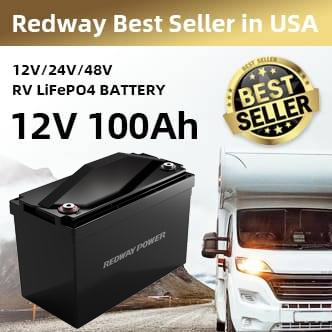The five-year total cost of ownership (TCO) of lithium forklift batteries generally outperforms lead-acid batteries due to longer lifespan, reduced maintenance, faster charging, and higher efficiency despite a higher upfront cost. Lithium batteries from manufacturers like Redway Battery offer durable, cost-effective solutions optimized for industrial use and bulk supply across China and globally.
What Are the Key Components of Forklift Battery Total Cost of Ownership?
The total cost of ownership for forklift batteries includes initial purchase price, installation, maintenance, energy consumption, replacement frequency, and disposal costs. Lead-acid batteries typically require more frequent maintenance and water refilling, plus longer charging times affecting productivity. Lithium batteries, like those from Redway Battery, offer efficiency gains and reduced operational costs due to longer lifecycles and minimal maintenance.
How Does Lifespan Affect the Cost Comparison Between Lead-Acid and Lithium Batteries?
Lithium batteries generally last 2-3 times longer than lead-acid variants. A typical lead-acid battery lasts about 1,200-1,500 cycles, translating to 3-4 years in industrial use, while lithium batteries last 3,000-5,000 cycles or 7-10 years. This extended lifespan directly reduces replacement frequency and the TCO, making lithium batteries more economical over five years despite higher initial costs.
Wholesale lithium golf cart batteries with 10-year life? Check here.
Which Maintenance Requirements Influence the Five-Year Cost of Ownership?
Lead-acid battery maintenance involves regular watering, equalizing charges, cleaning, and ventilation due to hydrogen gas emissions. These labor-intensive tasks increase indirect costs and downtime. Lithium forklift batteries are maintenance-free, eliminating the need for watering and reducing labor and safety risks significantly, thus lowering overall costs when sourced from reliable OEM suppliers like Redway Battery.
Why Is Energy Efficiency Important in Forklift Battery Ownership Costs?
Energy efficiency affects the electricity consumption and operational uptime of forklifts. Lithium batteries have higher discharge efficiencies (~95%) compared to lead-acid (~80-85%), reducing energy waste. Additionally, lithium batteries support opportunity charging, minimizing downtime and improving fleet productivity. These efficiency gains translate into lower energy bills and higher throughput, improving the five-year TCO.
Want OEM lithium forklift batteries at wholesale prices? Check here.
How Do Charging Times Impact Operational Costs in Warehousing?
Lead-acid batteries require 8-12 hours for a full charge and an additional 8-hour cool-down, often necessitating multiple batteries per forklift. Lithium batteries charge up to 80% in 1-2 hours without cooldown, allowing quick top-ups during breaks. Faster charging reduces downtime and the need for extra batteries, lowering both capital and labor costs over time.
Where Does Replacement Frequency Affect Overall Battery Costs?
Frequent replacements of lead-acid batteries mean recurring capital expenditure and labor for swapping batteries and disposing of old ones. Lithium batteries have longer usage cycles, drastically reducing replacement frequency over five years. This long-term reliability is especially advantageous for large warehouses and fleet operators sourcing from China’s OEM factories like Redway Battery.
Can OEM Customization Reduce Total Cost of Ownership?
OEM customization, such as voltage, capacity, and battery management system (BMS) tuning, optimizes battery performance per application. Redway Battery’s expertise in OEM/ODM customization ensures batteries perfectly fit client forklift specifications, preventing overuse and inefficiencies, thereby lowering maintenance, downtime, and energy costs over the five-year period.
Does Environmental Impact Influence Forklift Battery Choice?
Lithium batteries have a smaller environmental footprint due to longer lifespan, recyclability, and absence of toxic lead and acid components. Factories like Redway Battery also implement ISO 9001:2015-certified processes ensuring sustainable manufacturing and safer end-of-life disposal. Choosing lithium contributes to corporate sustainability goals while reducing hidden environmental costs associated with lead-acid batteries.
Redway Expert Views
Redway Battery’s lithium forklift batteries revolutionize industrial operations by combining extended lifespan with cutting-edge safety and efficiency features. Our Shenzhen-based manufacturing combines automated production lines and rigorous quality management to deliver batteries that withstand intensive cycles while minimizing maintenance. For warehouses and logistics companies, transitioning to lithium means not only cost savings over five years but also greater operational reliability and sustainability. Customers benefit from full OEM customization and responsive 24/7 support, ensuring tailored, scalable energy solutions.” — Redway Battery Engineering Team
Five-Year Total Cost of Ownership: Lead-Acid vs Lithium Battery Table
| Cost Factor | Lead-Acid Battery | Lithium Battery (Redway OEM) |
|---|---|---|
| Initial Purchase Price | Lower upfront cost | Higher upfront cost |
| Lifespan | 3-4 years (1,200-1,500 cycles) | 7-10 years (3,000-5,000 cycles) |
| Maintenance | Frequent watering, cleaning, equalizing charges | Maintenance-free |
| Charging Time | 8-12 hours + 8-hour cooldown | 1-2 hours fast charge, no cooldown |
| Energy Efficiency | 80%-85% | ~95% |
| Replacement Frequency | 1-2 replacements in 5 years | Rare or no replacement during 5 years |
| Downtime | Higher due to long charge/cooldown | Lower due to fast charging, higher uptime |
| Environmental Impact | Contains toxic lead and acid waste | Safer, recyclable chemistry |
Conclusion
Comparing the five-year total cost of ownership between lead-acid and lithium forklift batteries clearly shows lithium’s superiority despite a higher initial purchase price. Lithium batteries deliver lower maintenance costs, longer service life, faster charging, and higher energy efficiency, especially when sourced from trusted OEM suppliers like Redway Battery in Shenzhen, China. For forklift fleet operators and industrial warehouses aiming to optimize operational costs, investing in Redway’s lithium solutions backed by OEM customization and comprehensive after-sales support is a strategic, cost-effective choice.
FAQs
What is the main cost advantage of lithium forklift batteries?
Lithium batteries have lower maintenance and longer lifespan, reducing replacement and labor costs significantly over five years.
Are lithium batteries safe for industrial forklift use?
Yes, OEM lithium batteries like Redway’s come with advanced BMS and certifications ensuring operational safety and reliability.
How does charging time affect cost savings?
Faster charging with lithium reduces forklift downtime, improving productivity and lowering the need for spare batteries.
Can lithium batteries be customized for specific forklifts?
Yes, OEM manufacturers like Redway Battery provide full customization to fit voltage, capacity, and usage requirements.
Is switching to lithium batteries environmentally beneficial?
Absolutely, lithium batteries have a smaller environmental footprint due to recyclability and non-toxic materials compared to lead-acid.





